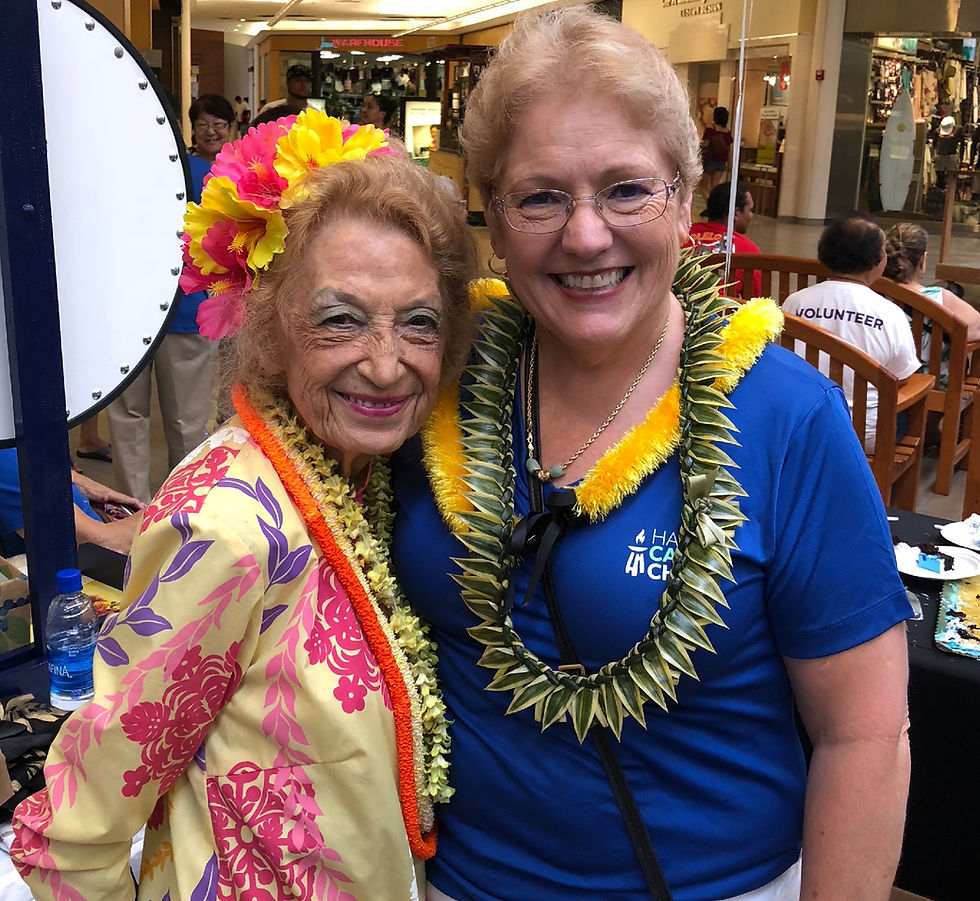Graduating from Hospice Care - An Interview with Iwao Nagata and Sharyl Okamoto
- dnakata
- Feb 21, 2019
- 4 min read

What does it mean to “graduate” from hospice care?
A person is eligible for hospice care when a doctor, in his/her best opinion, estimates a patient is entering the last stage of life and has six months or less to live. This is what most people expect the outcome to be when admitted to hospice care. However, it is more common than people realize to improve under hospice care, and for some, graduate, no longer needing hospice services.
This was the case for Iwao Nagata, who was under hospice care with Hawai’i Care Choices for a year, regaining his strength with each passing month. Our interview took place at the Yukio Okutsu State Veterans Home towards the end of 2018. Iwao and daughter Sharyl Okamoto joined Hawai‘i Care Choices’ Community Relations Manager, Lani Weigert, to talk about the hospice care Iwao received before becoming so well that he was discharged from the program.
“You have that stigma, ‘hospice’ that means it will end soon – but I think they made him better,” declared Sharyl.
Once patients start hospice care, they are encircled by an entire care team. Consistent monitoring from a supervising nurse, in addition to home health aides, social workers, spiritual counselors, and volunteers, often stabilize patients’ conditions due to hospice’s expert pain/symptom management and holistic approach. Because the team is regularly visiting the home, symptoms are managed better and sooner. This careful attention prevents patients from letting their symptoms get so bad that they end up in the emergency room, a common occurrence for those with chronic conditions.
Before calling Hawai’i Care Choices, Iwao was frustrated, confused, and wasn’t eating. Fit all his life, Iwao enjoyed diving from the boats he would build himself, ballroom dancing with his wife, and practicing Kendo. Along with his strong body, Iwao always had a sharp mind, said daughter, Sharyl. So, it was concerning when, at 92, he couldn’t remember conversations, his legs started getting weak, and he started falling. “Things went downhill fast; we called the ambulance. They diagnosed him as a quadriplegic.”
Iwao’s quality of life began to suffer. He liked to go look at the water, but his rapidly failing health made it so he couldn’t sit up, and frequently felt dizzy. Trips to see the water became too difficult to enjoy.
“I used to be a volunteer for hospice a long time ago, so I know how good this organization is. I thought when I was a volunteer – if I ever get sick, I’m going to them.” And that is what Sharyl did. The staff at Hawai‘i Care Choices “took care of him like family. When they walked in the heaven’s opened because they were so good. And I liked that they always involved him in everything, he was part of the conversation.”
Iwao Nagata laughed when asked how old he was – then with a smile asked his youngest daughter Sharyl. She replied that her dad is 94. A member of the Hilo High class of 1942, and a veteran with the U.S. Army, Iwao has many stories to tell.
Now at Yukio Okutsu State Veterans Home, Iwao enjoys playing bingo and poker. “I stay on the winning side,” he said with a grin. After receiving hospice care, his mind is back, and his arms are strong. “He is scolding us and bossing us around – so now I guess he is ok,” Sharyl laughed.
Lani Weigert often mentions in community talks that “People don’t believe that people graduate from our care – but the reason they leave our care is they get better.”
Sharyl Okamoto agrees. When asked what she would tell people on the fence about hospice care, she shared: “If it’s end of life I would say ‘move as fast as you can because you need to make that decision.’ The decision to take hospice is the best decision you can make because they make you feel – like Japanese the saying ‘kimochi’ – peace of mind – they bring in volunteers and give respite for what you need. They care for the patient really well, but they also care for the caregiver which is sometimes just as important.”
So, what happens to someone who graduates from hospice care? When time is limited, perspectives change. For hospice graduates, it is an opportunity for patients, and those that love them, to focus on what matters most to them, to enjoy the gift of additional time.
It is important to note that Medicare does not limit the number of times a patient enters or exits hospice. Patients can leave whenever they choose, and should there be a further decline in the future they can return when they feel the extra layer of support is needed.
Hospice care is about living well now – and for some, that is just what they needed to regain their strength. “The staff came in like rays of sunshine,” said Sharyl. “They came in and made him feel good. He would always be smiling.”

If you, or someone you love, has recently been diagnosed with a chronic or terminal illness, call Hawai‘i Care Choices to discuss where you and your doctor believe you are on the continuum of care, and learn how we can help. (808) 969-1733. The earlier you reach out – the more we can help.




Comments